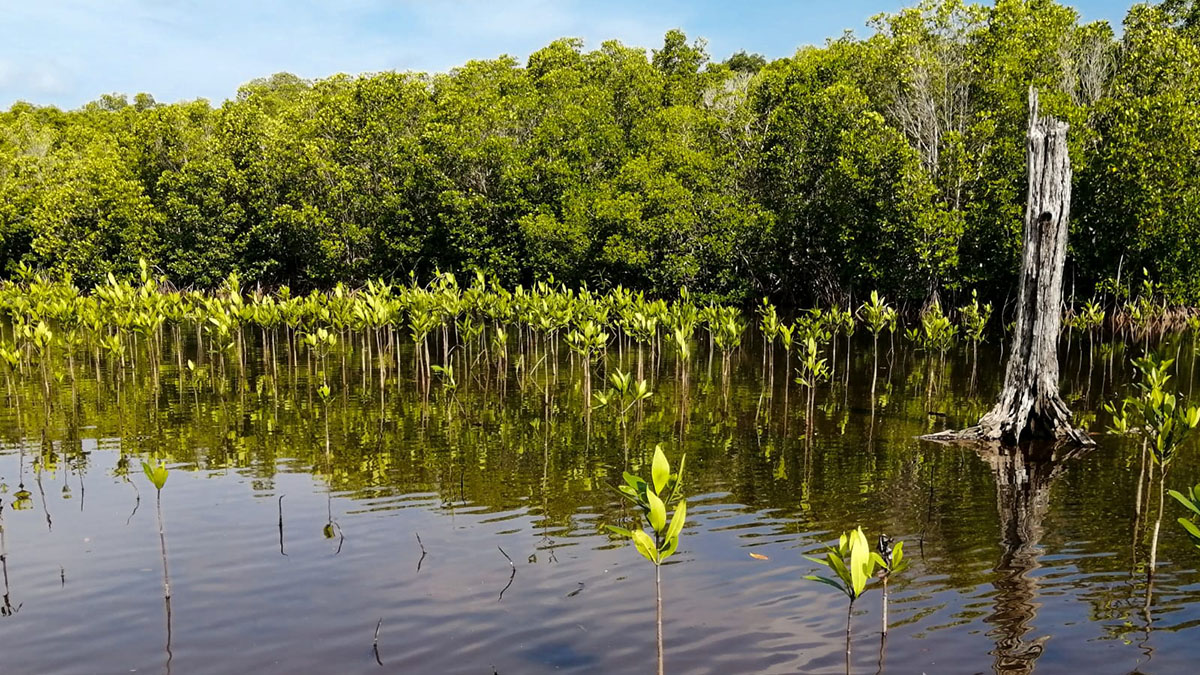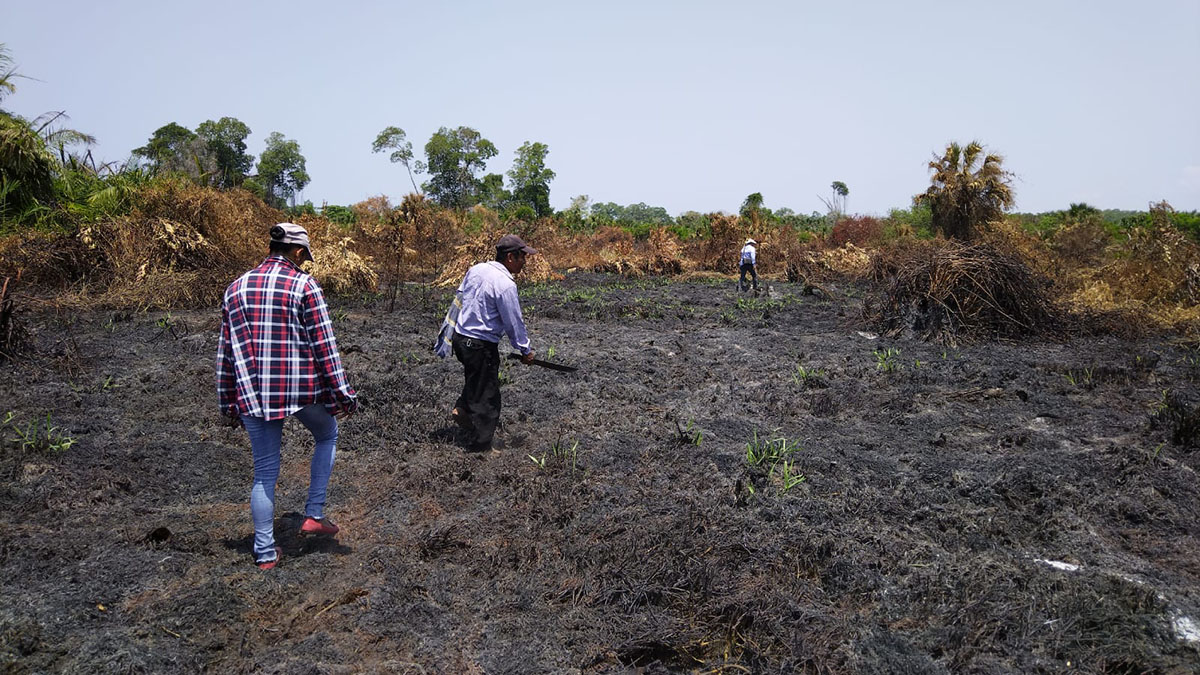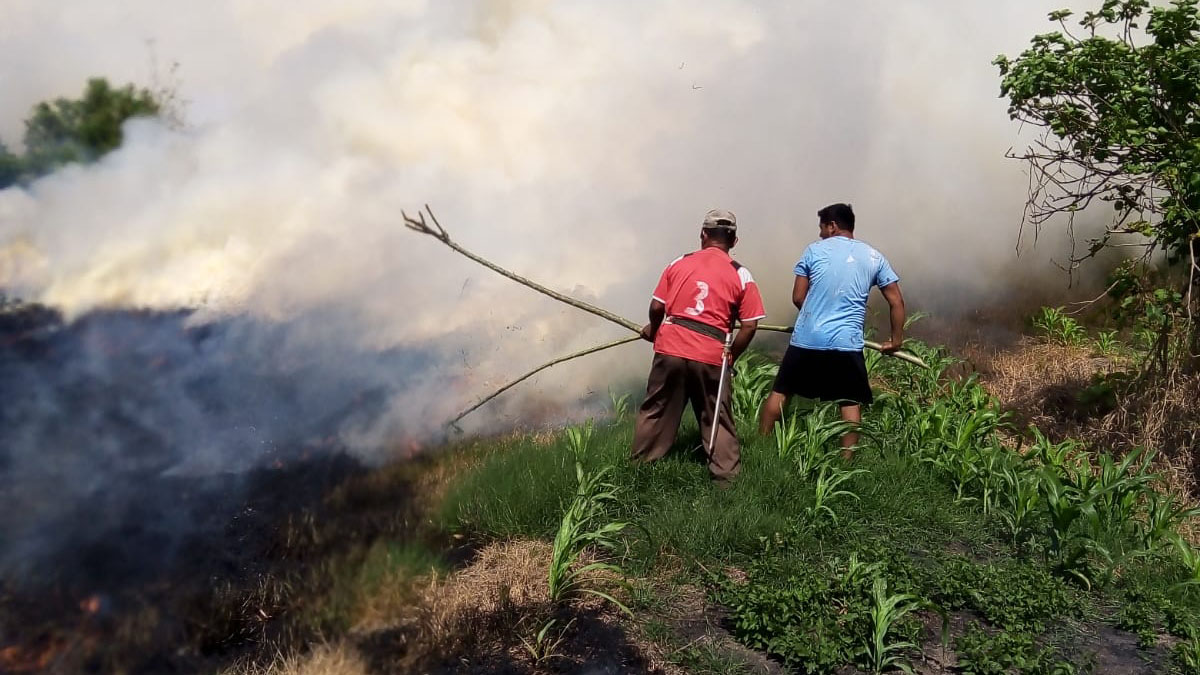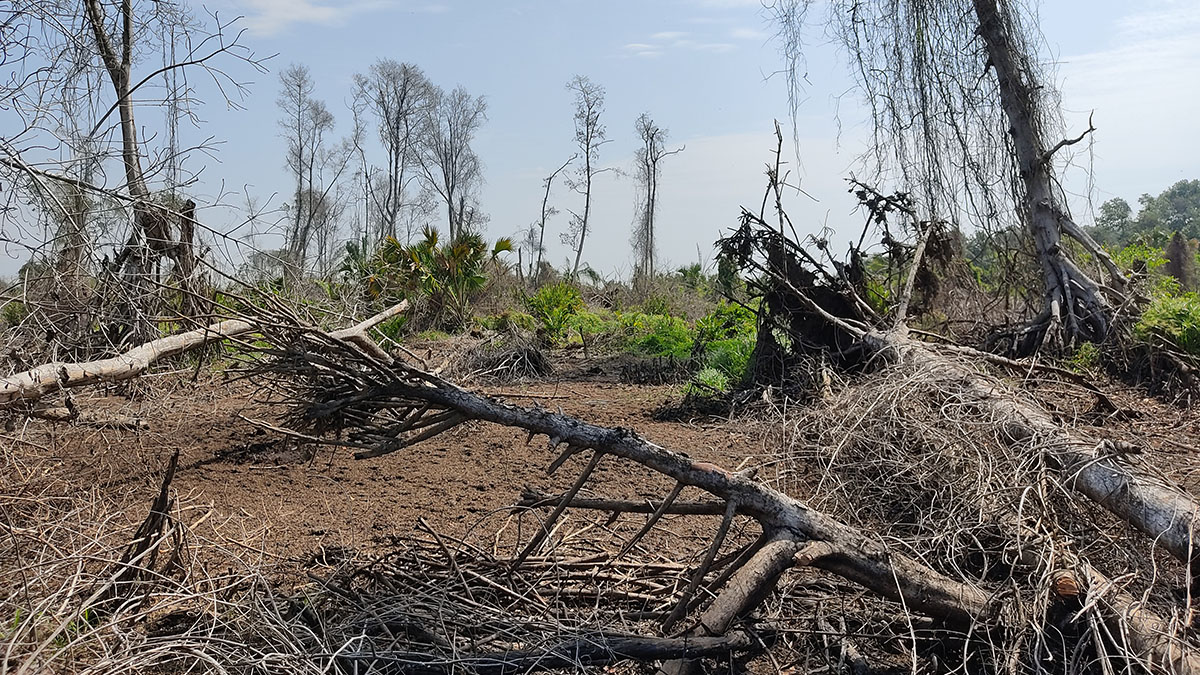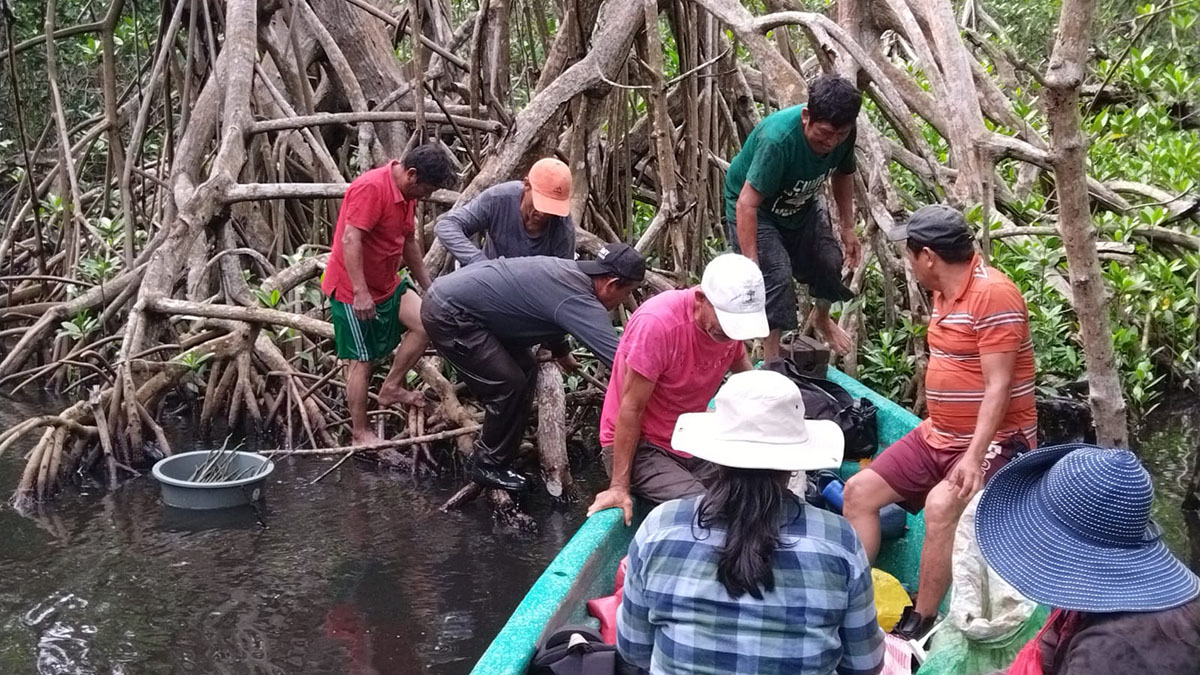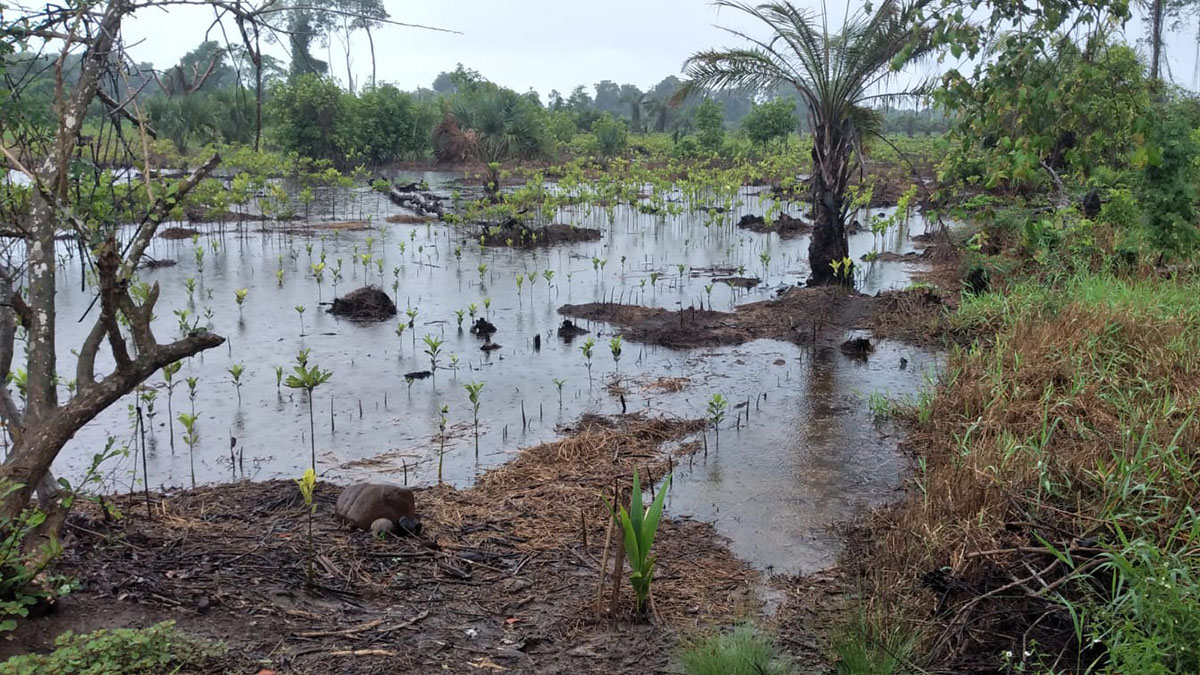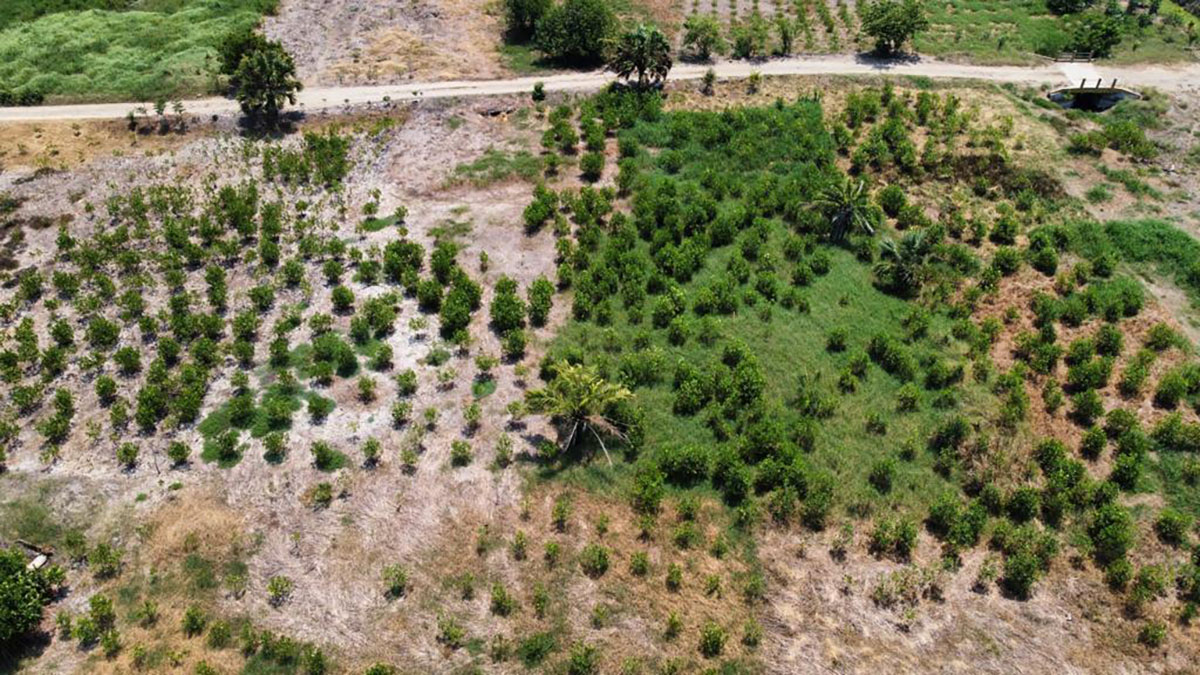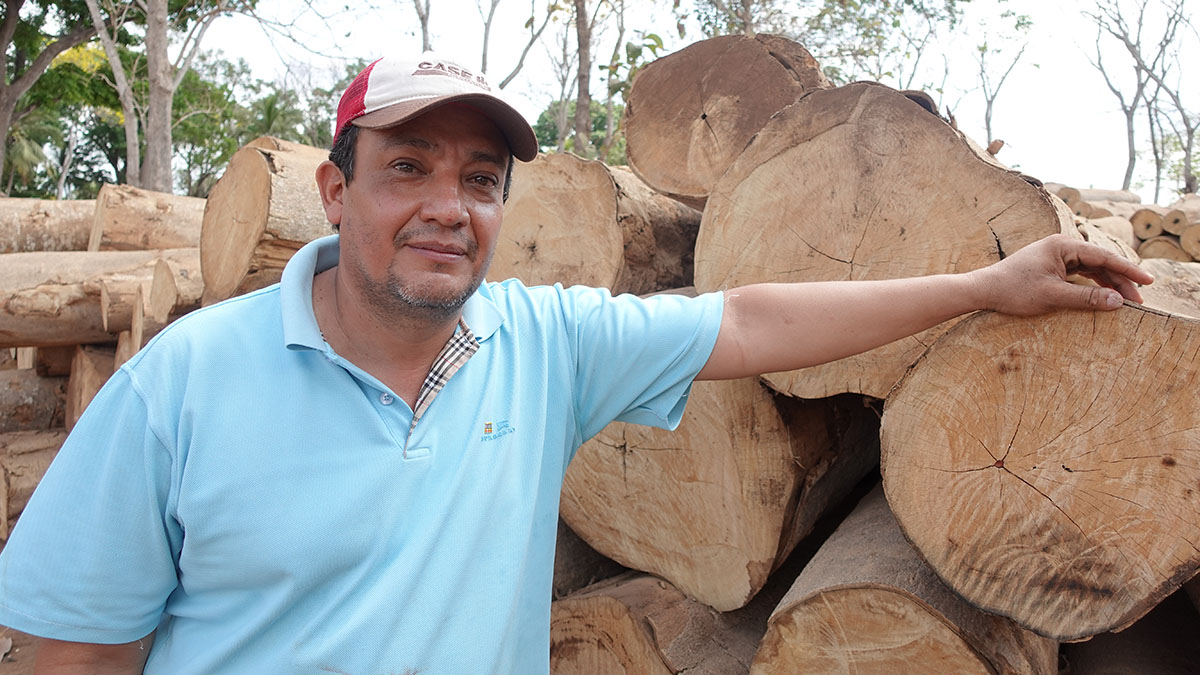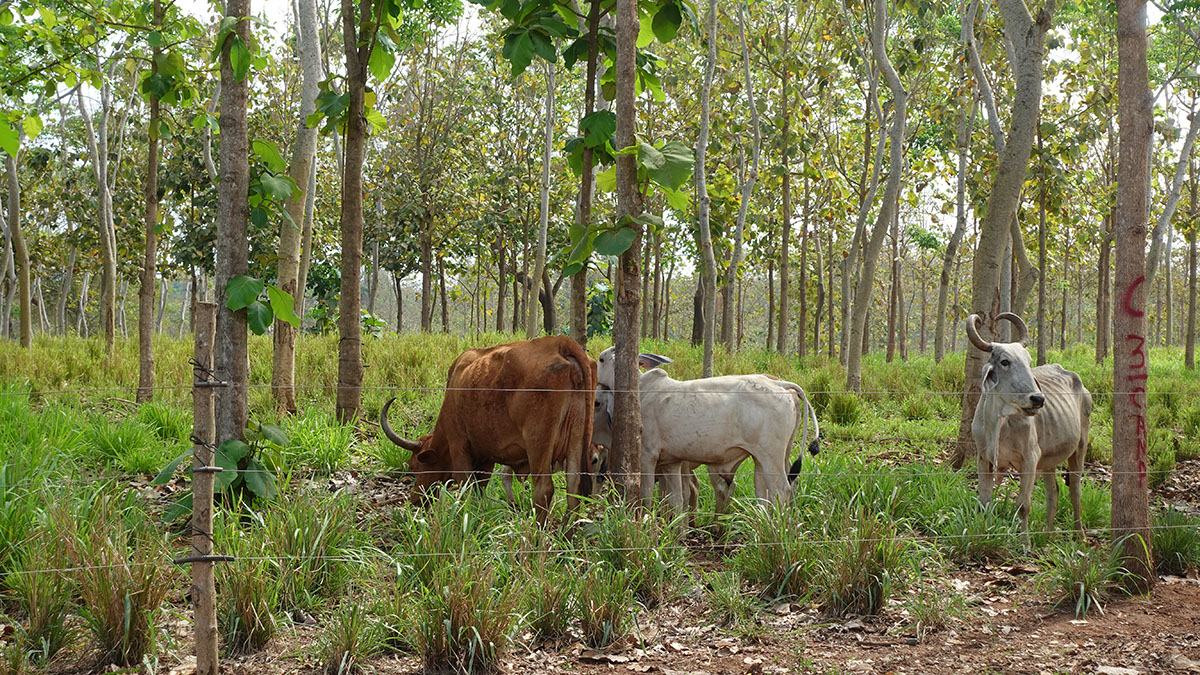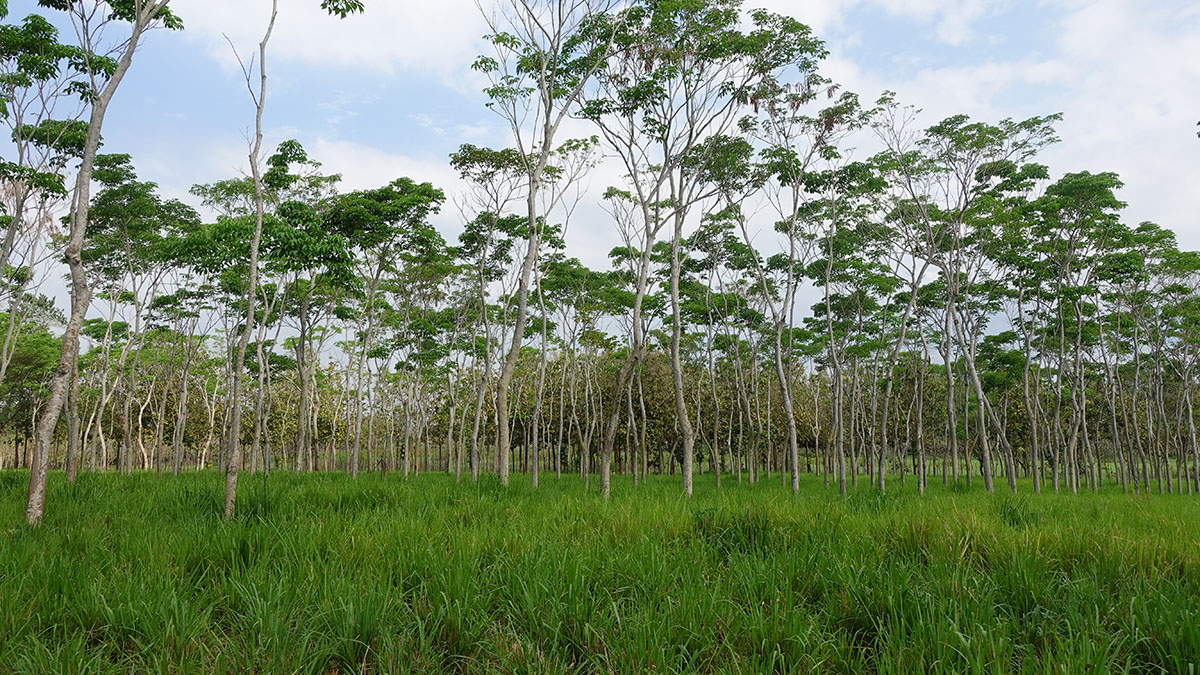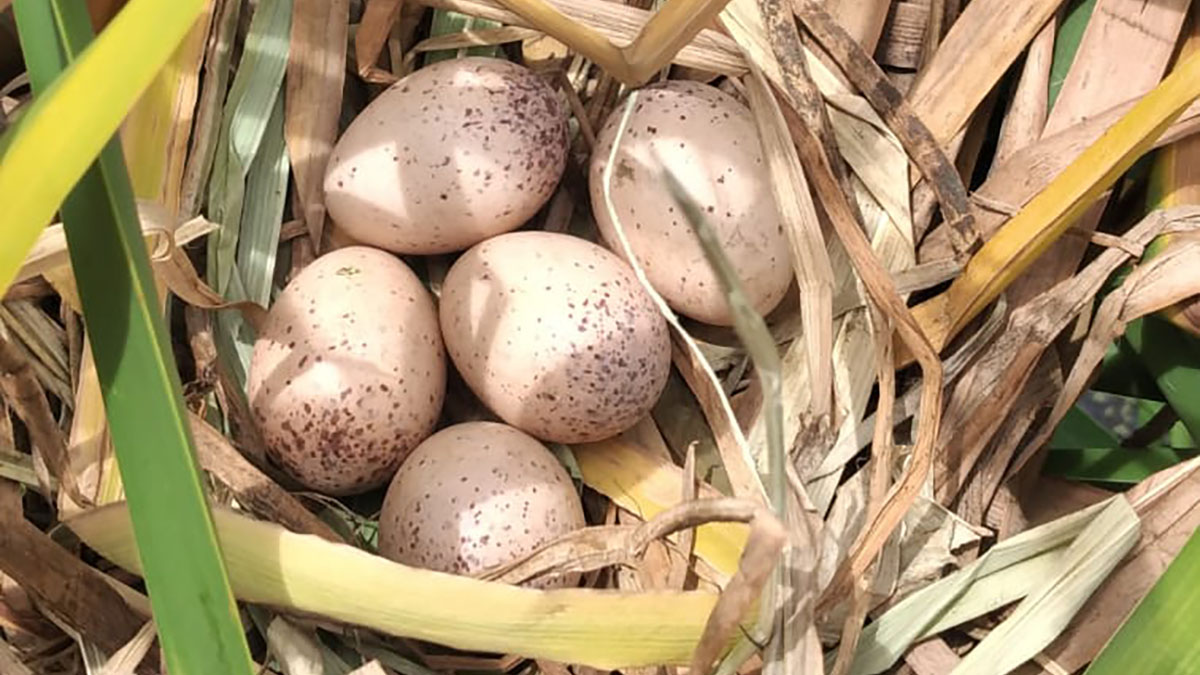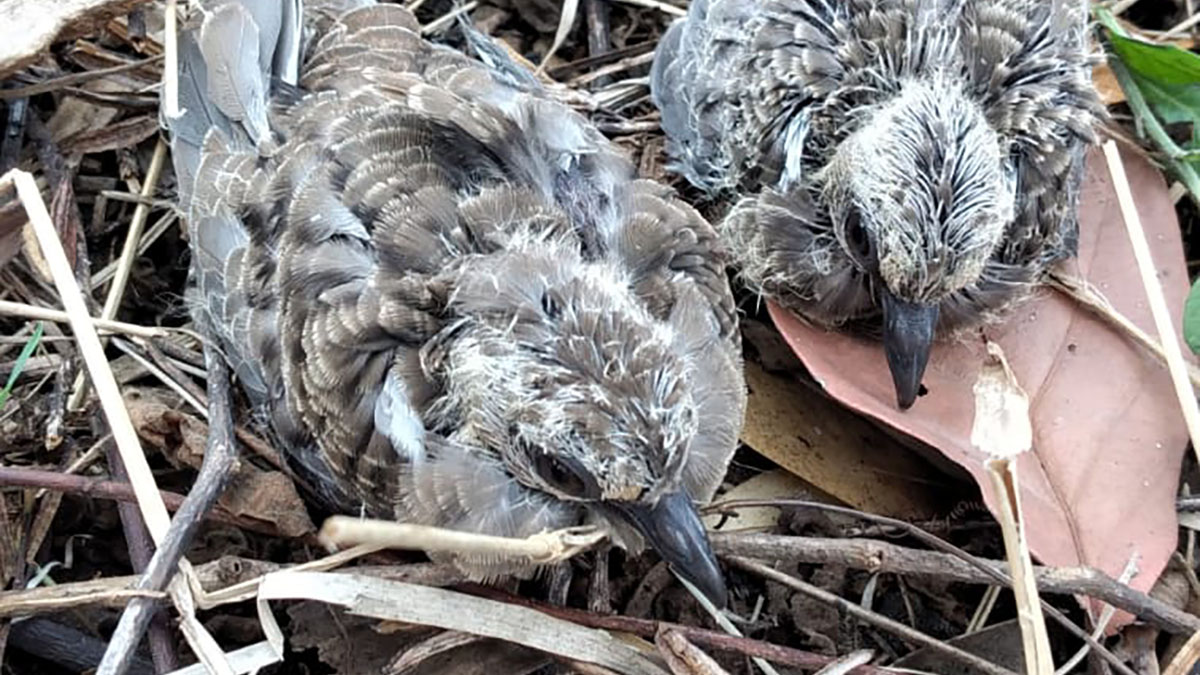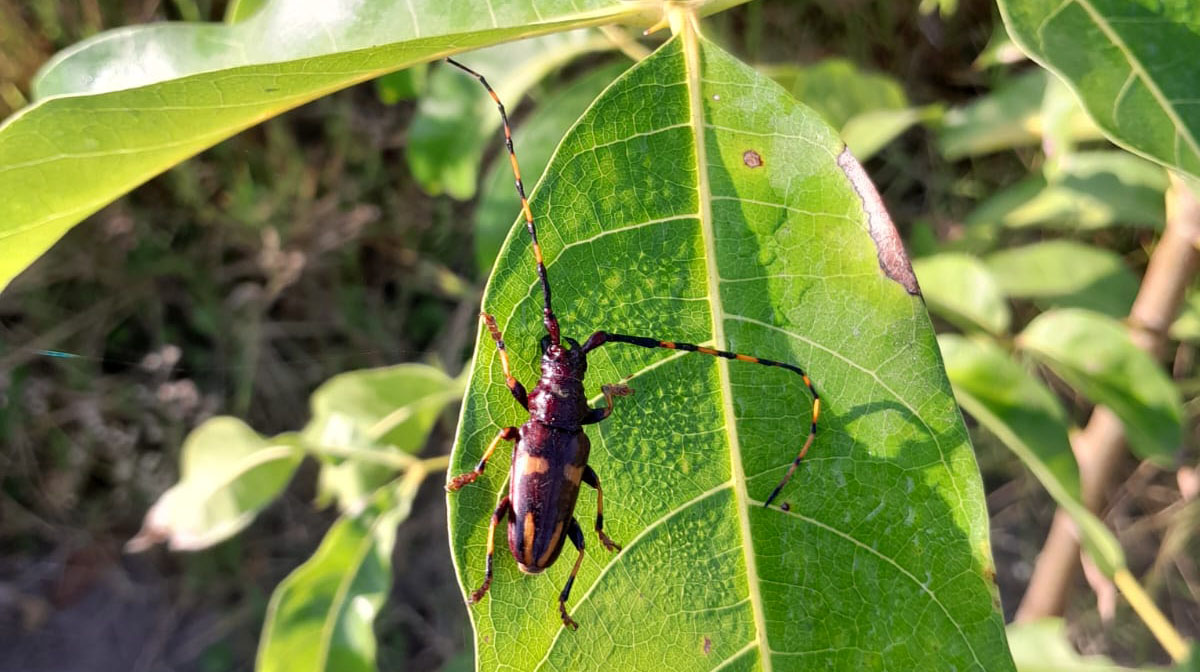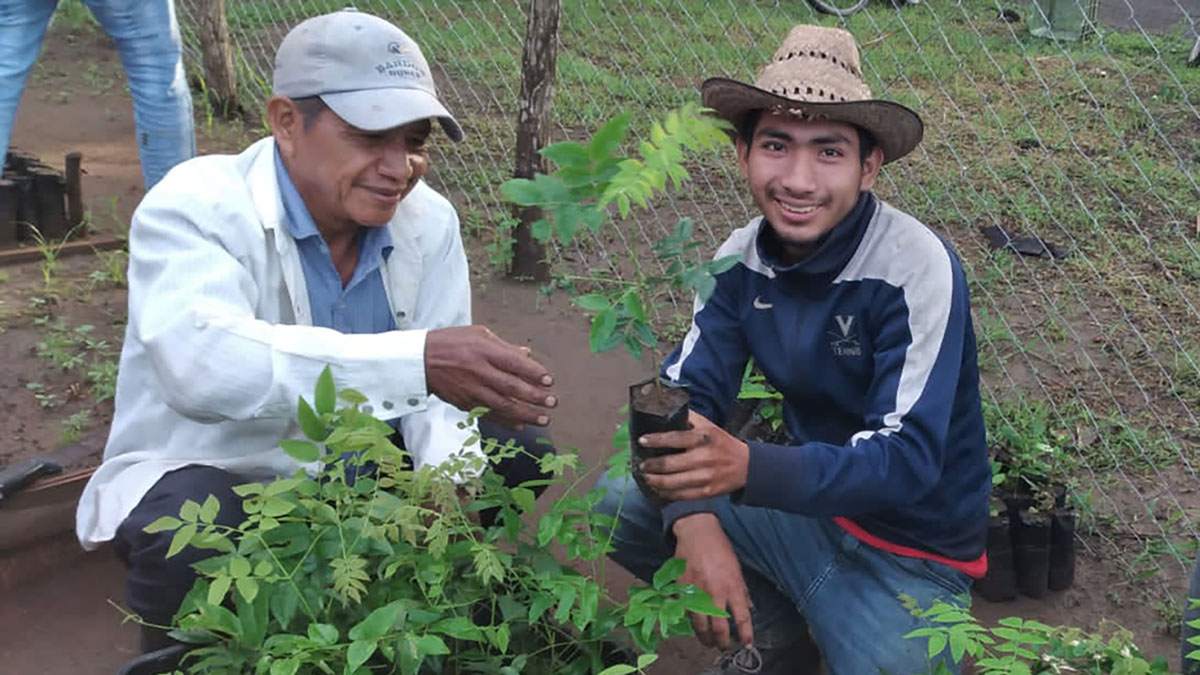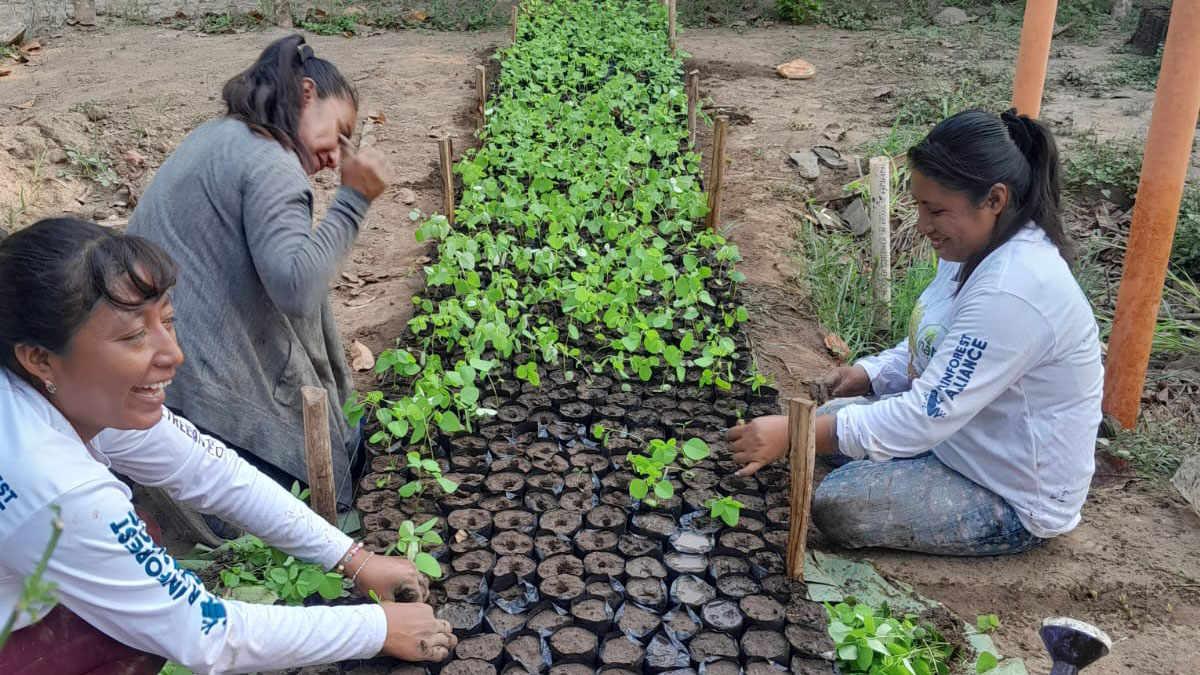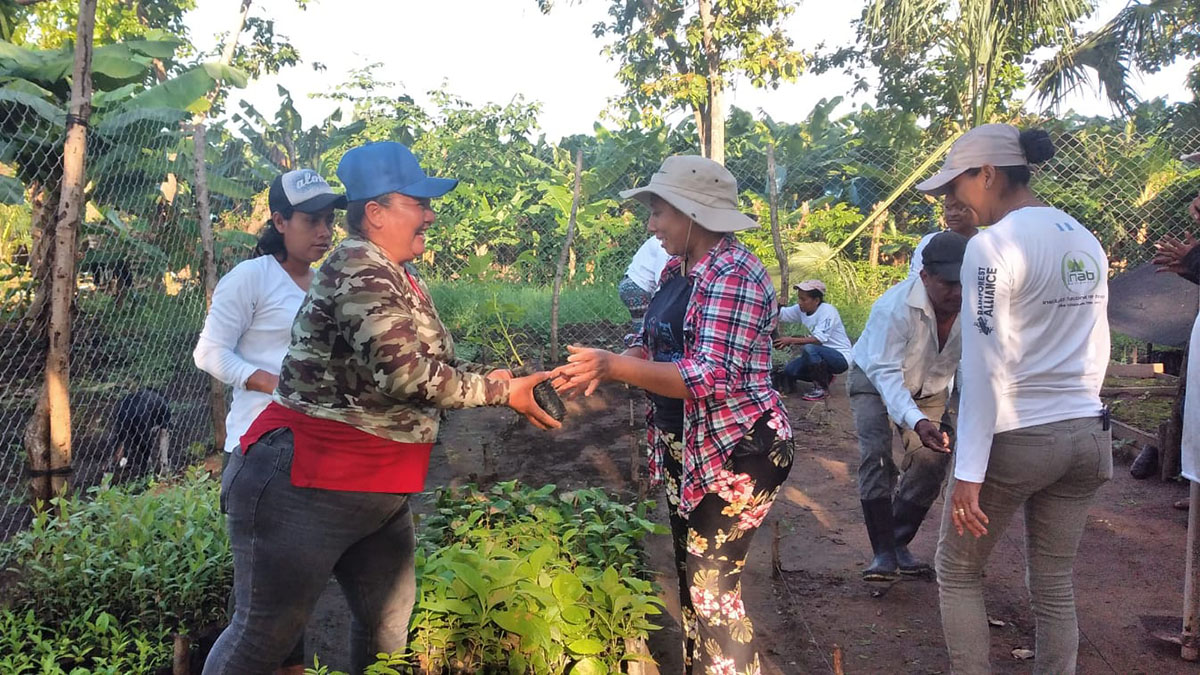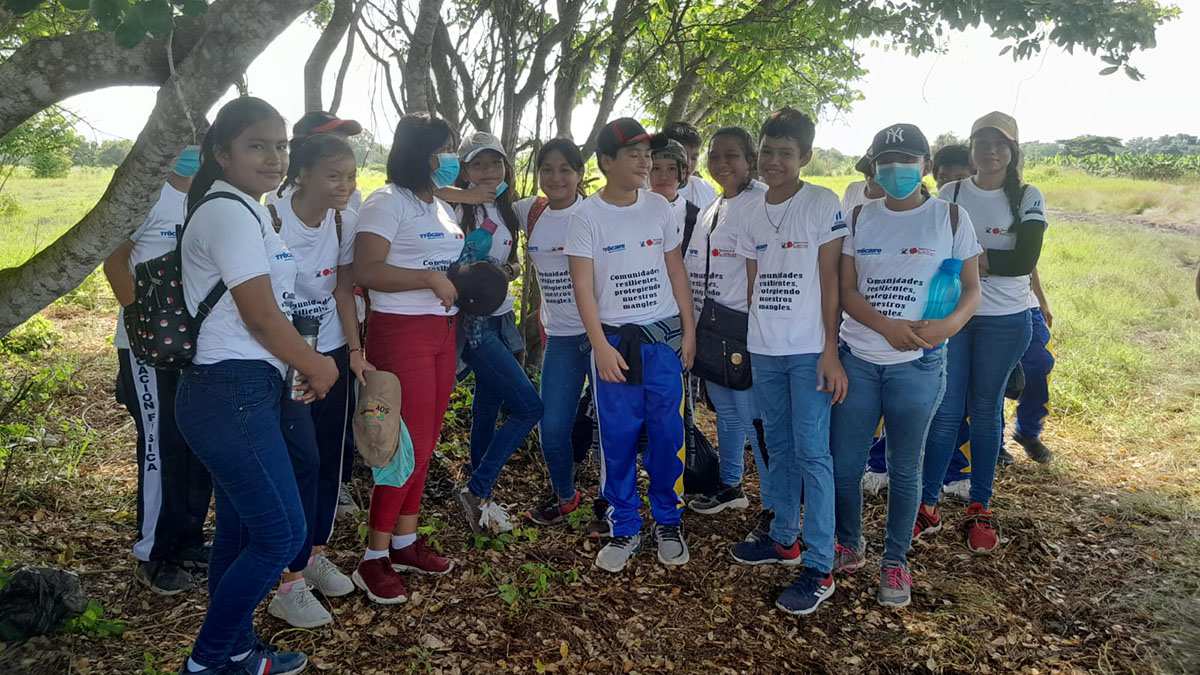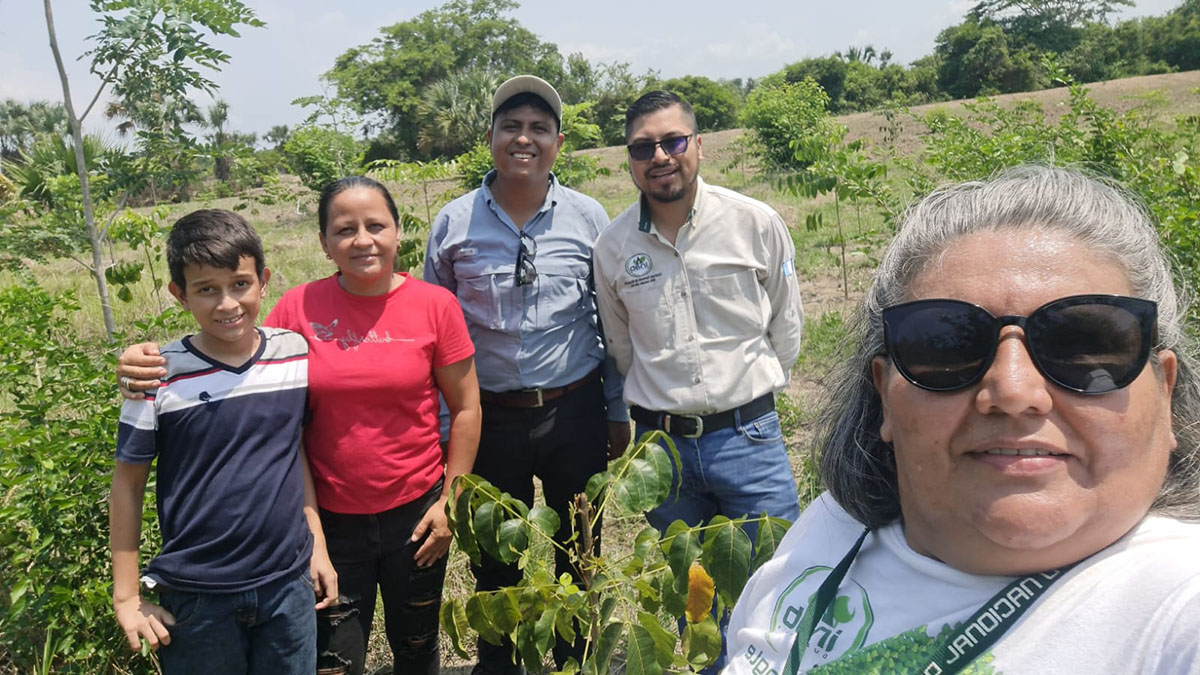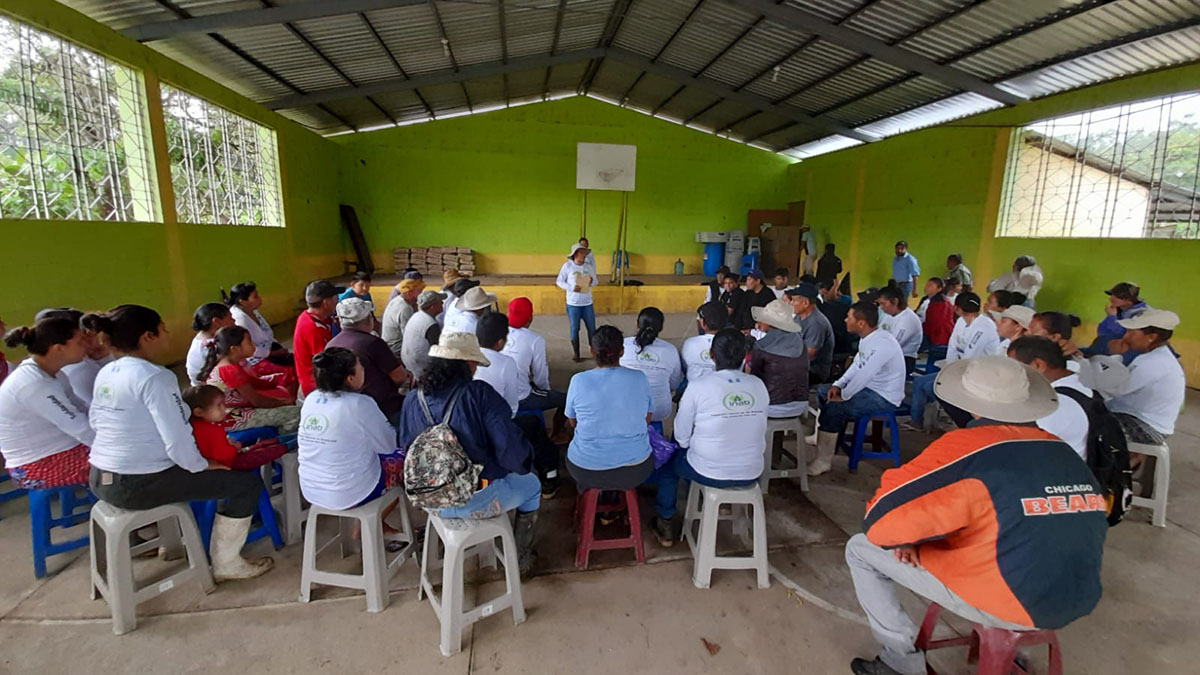The 31 de Julio community is located on Guatemala’s Pacific coast, in one of the country’s most important agricultural areas. Nearby is the flourishing Manchón Guamuchal mangrove forest, which has been a lifeline to local communities.
The mangroves contribute to the favorable microclimate that supports large-scale banana, plantain, palm oil, and sugarcane production, while at the same time nurturing the biodiversity of an important marine-coastal ecosystem. Additionally, the mangroves are an important global resource that absorb up to four times more carbon dioxide per area than terrestrial mountain forests.
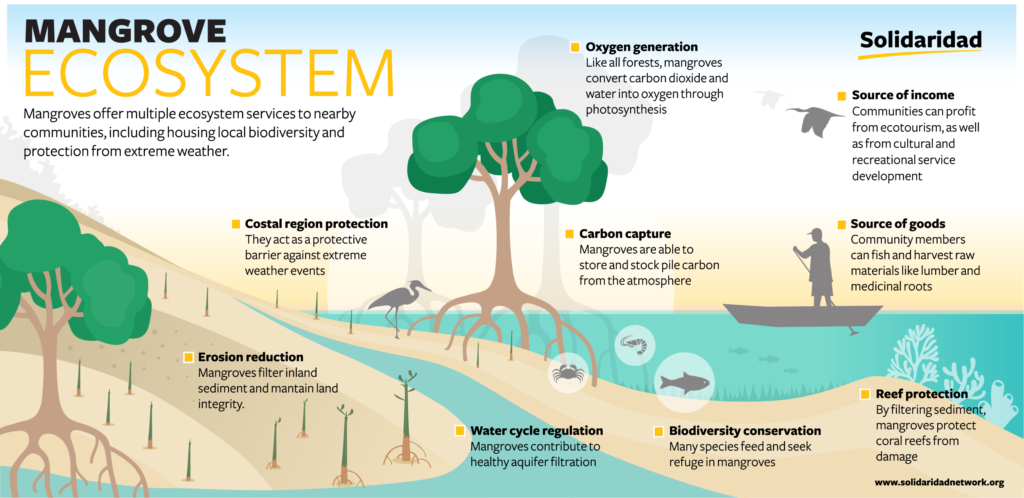
The fire that destroyed the mangrove
In 2019, a fire caused by poachers destroyed 30 hectares of mangrove forest, which had a dramatic impact on the local ecosystem and its biodiversity. The fire affected not only the mangrove forest, but also the 31 de Julio community and the many businesses and farms in the region. The most serious consequences of the fire included:
- The loss of a natural barrier that prevented flooding.
- A radical change in the area’s climate.
- Fauna native to the mangrove area started to invade the adjacent farmland.
- The degradation of the natural nutrient filter between the terrestrial and marine zones.
“When I was 20 years old, I entered the mangrove forest for the first time. I loved it,” said Carmen Gómez, 31 de Julio community leader. “When I heard about the fire, I cried with frustration…I thought if I could help recover the mangrove forest or restore it, I would do it with all my heart and my will”
In the aftermath of the fire, community members survey the damage. The community now has a monitoring system to prevent fires from growing, which reduces their large-scale impact.
Working together to recover the mangrove
In early 2019, Solidaridad in partnership with the Rainforest Alliance, the National Forest Institute (INAB), and the companies Agroaceites, One Banana, and Grupo Hame initiated a dialogue with the community members of 31 de Julio. Solidaridad joined the project using the LandScale tool, a framework that measures and provides access to data on the environmental, social and economic performance of a landscape, while also evaluating and promoting sustainability within the designated territory.
“When the project began, the land was completely empty due to the fire…Then, we began organizing ourselves as a community and then this partnership of organizations appeared,” Gómez said.
The intervention to restore the mangroves had three main components:
- Seed collection
- The reforestation programme
- Training on harvesting, planting, plantation maintenance, and pest identification and management.
A mangrove roundtable was created with all stakeholders. The first step was to clean up the area, which lasted four weeks and involved men, women, children, and youth. Next came seed collection and the planting of the first mangrove plants.
Solidaridad and the Rainforest Alliance expanded the project into neighboring communities by introducing the Probosques programme, an incentive-based process in Guatemala that encourages reforestation while stimulating economic growth in rural communities. As an additional benefit, the LandScale partners suggested alternative landscape management systems such as agroforestry and silvopastoral plantations.
“According to INAB, there was this community [31 de Julio] that was interested in working with the mangrove, so we presented ourselves and told them about the LandScale initiative and they asked us for only one thing, to recover their mangrove that had been burned” Mario Rafael Rodriguez, Rainforest Alliance.
Developing systems that mix cattle ranching with the planting of timber trees can be a sustainable alternative for the area’s inhabitants.
Difficulties on the road
One of the main challenges was the coordination of the multi-stakeholder roundtable and the full inclusion of the 31 de Julio community to participate in the recovery activities, according to José Luis López, Solidaridad country manager in Guatemala.
Carmen Gomez, a 31 de Julio community leader, shared her experience as a woman participating in this project:
“At the beginning, the community told us that women were not good enough for this work. Gradually, women have been positioning themselves and making others understand that we, women, can do it too.”
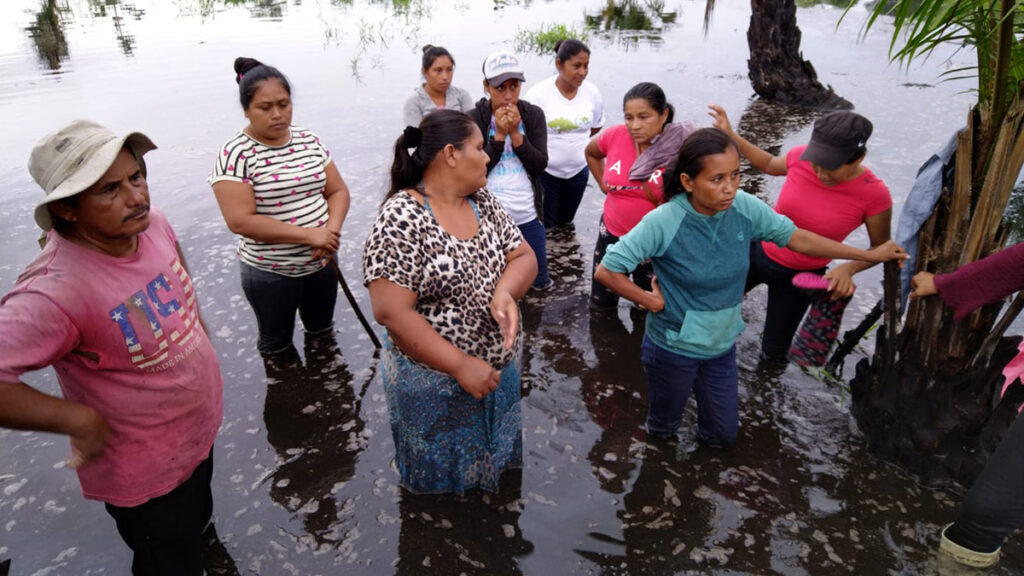
Reaching goals together
Over time, other stakeholders joined the platform to strengthen the intervention, and helped replicate these actions in other communities. The team effort to recover the mangrove forest helps restore and preserve biodiversity, ensure water quality, and assist with climate managemen.
While Solidaridad’s LandScale tool and development expertise was essential to the process, the Rainforest Alliance provided training in plantain management and was able to link its best practices programme for improved management and increased productivity.
Additionally, the Climate Change Institute (ICC) provided the community with advice on restoration and reforestation. Individuals and groups working together strengthened ties within the community, among leadership, and in relation with the area’s production companies.
“We do it for the future of our children so that they can see the trees that we planted,” said Caralino Tum, 31 de Julio community president.
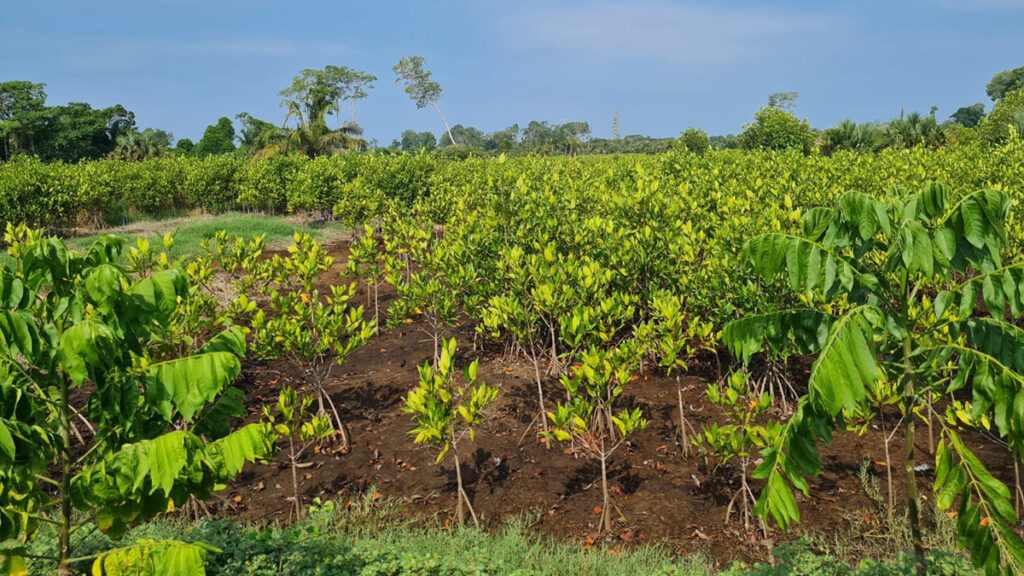
“Having institutions come and tell us, ‘yes, it’s excellent,’ is like a motivation for all of us to keep doing things. We feel proud because we are creating our dreams and we are seeing them become a reality. We are seeing our forest again,” said Carmen Gómez, 31 de Julio community leader.
A resilient community looks to continue on a path to sustainability
In 2021, Solidaridad’s intervention ended with the end of the LandScale pilot programme, but the project continues. The 31 de Julio community, motivated by the results, together with other stakeholders decided to continue their work to introduce agroforestry practices on local plantations.
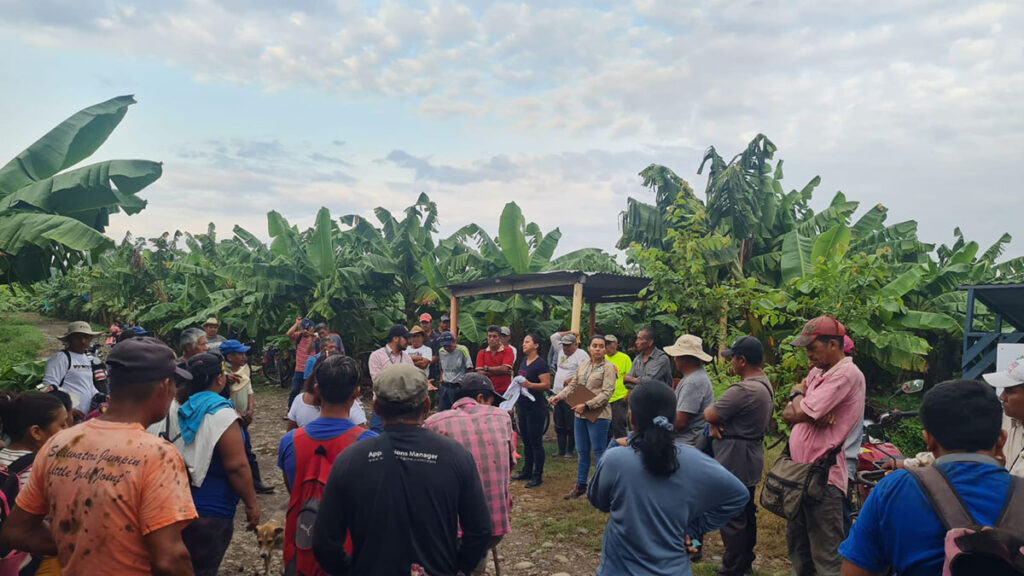
The number of stakeholders on the LandScale roundtable has grown dramatically. Training continues on specialized topics of interest, and there are ongoing exchanges among the stakeholders of the roundtable who are developing trainings on biodiversity conservation and environmental monitoring.
The effort to renew the mangrove forest after a devastating fire has grown into a partnership between the local community and a number of regional and international organizations, including Solidaridad. The dramatic success of the project stems from the dedication of the residents of 31 de Julio, who used the tools offered by supportive stakeholders to find reforestation solutions suitable to this unique landscape.
“The community feels empowered and counts on the conservation plan; this has motivated them to continue. In addition, they have found a common goal with which to work together and organize,” said José Luis López, Solidaridad country manager in Guatemala.
The benefits of ecosystem recovery are already there. Birds, reptiles, amphibians, and insects have all returned to the landscape.
“This year we are producing cashew, hibiscus, mahogany, and cocoa, to make the forest more energetic. If the hibiscus does well, we could have an economic benefit. Also, with the support of Rainforest Alliance and the ICC, we are implementing a community garden,” said Gómez. The new greenhouses have been a success in the community.
“My dream is to see the lush mangrove forest again; to see it with its native animals and the animals that come in passing through. Now that the project is two years old, the birds have returned,” added Gómez.
“I felt very satisfied when I entered the area and saw that the trees, even though they are small, already have nests. I look forward to the day when as part of the 31 de Julio community we will be able to say, ‘We achieved our dream, the mangrove forest is completely restored’,” says Gómez.
The 31 de Julio community is a great example of the great economic, social, and environmental benefits of successfully working together to create community leadership.
Thanks to the 31 de Julio community, government agencies, and civil society organizations for sharing the photos that illustrate this article.

